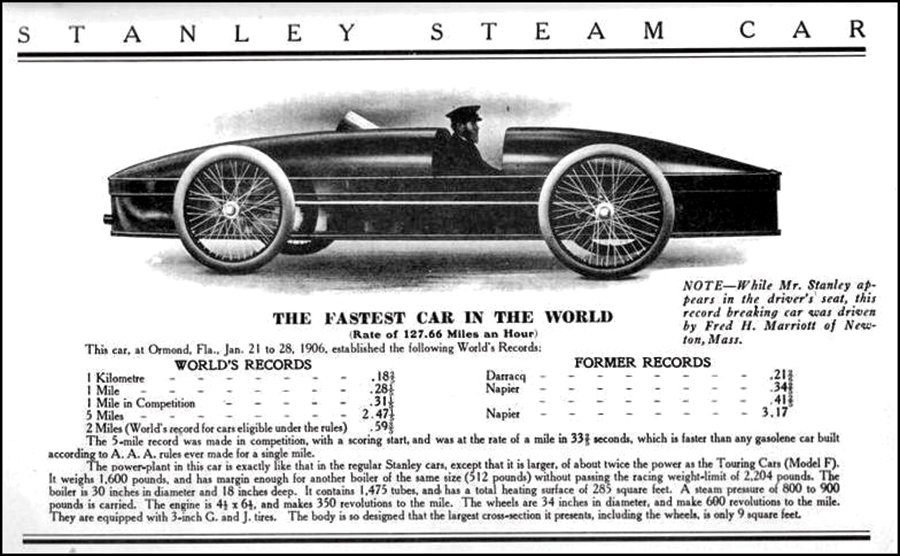
In recent years we have become used to the idea of hybrid gasoline/electric-powered cars and, even more recently, all-electric cars as a serious alternative to the ubiquitous internal combustion (IC) gasoline-powered car that has owned the market for nearly a century. But this is not a new idea. In the early days of the automobile, alternative energy sources, including liquid fuels like gasoline used to power steam (external combustion) or internal combustion engines, electric batteries and even wild ideas like massive wind-up spring-powered devices were tried. And for some time there was no clear-cut winner.
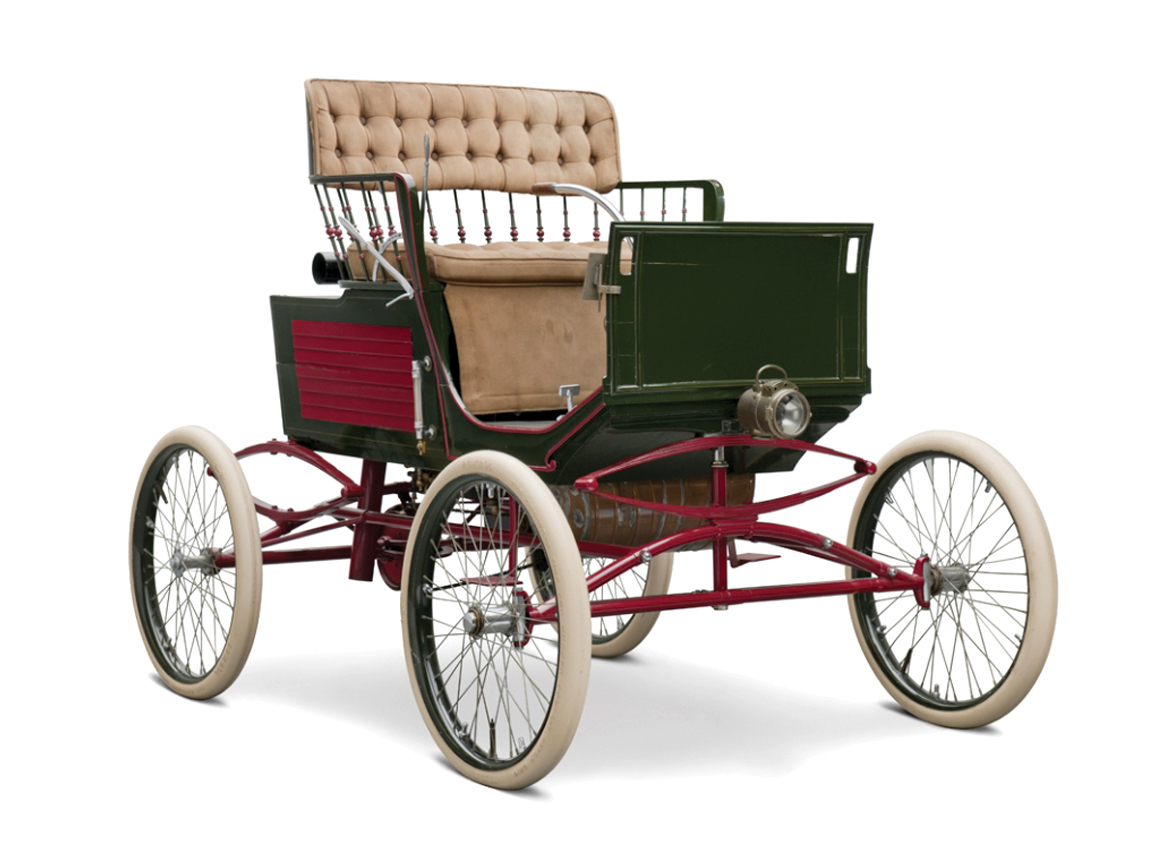 By the 1890s, steam power had been an established technology for over
a century. The Stanley brothers developed a steam-powered car 1897, but they only built about 200 before they sold their patents to Locomobile. A couple years later, Locomobile decided to switch production to gasoline-powered cars and the Stanleys bought their steam patents back and produced cars under the Stanley name until the early 1920s.
By the 1890s, steam power had been an established technology for over
a century. The Stanley brothers developed a steam-powered car 1897, but they only built about 200 before they sold their patents to Locomobile. A couple years later, Locomobile decided to switch production to gasoline-powered cars and the Stanleys bought their steam patents back and produced cars under the Stanley name until the early 1920s.
The Stanleys built a special speed challenger named “Rocket,” which they took to Ormond Beach, Florida for the precursor of the Daytona Beach Speed Weeks in the early 1900s. Fred Marriott drove the car, which looked like an inverted canoe on bicycle wheels, to a record speed of 127.66 mph (205.45 km/h) in 1906. He probably went even faster the next year, but he crashed before he had recorded a time – the myth that he reached 190 mph cannot be substantiated.
In contrast to the White or the Doble steam cars, which were big “Cadillac-style” cars, in its heyday the Stanley was more of a sporty lightweight, popular for its acceleration and speed. After WWI, the Stanleys had no additional power but were weighed down with modern bodywork and accessories so they were not competitive with their gasoline-powered competition. The company went into decline and the factory closed in 1924.
The White was another popular steamer which was, along with a Baker electric, part of the original White House fleet in 1909. It was built from 1900 to 1911 before the company converted to gasoline-powered cars.
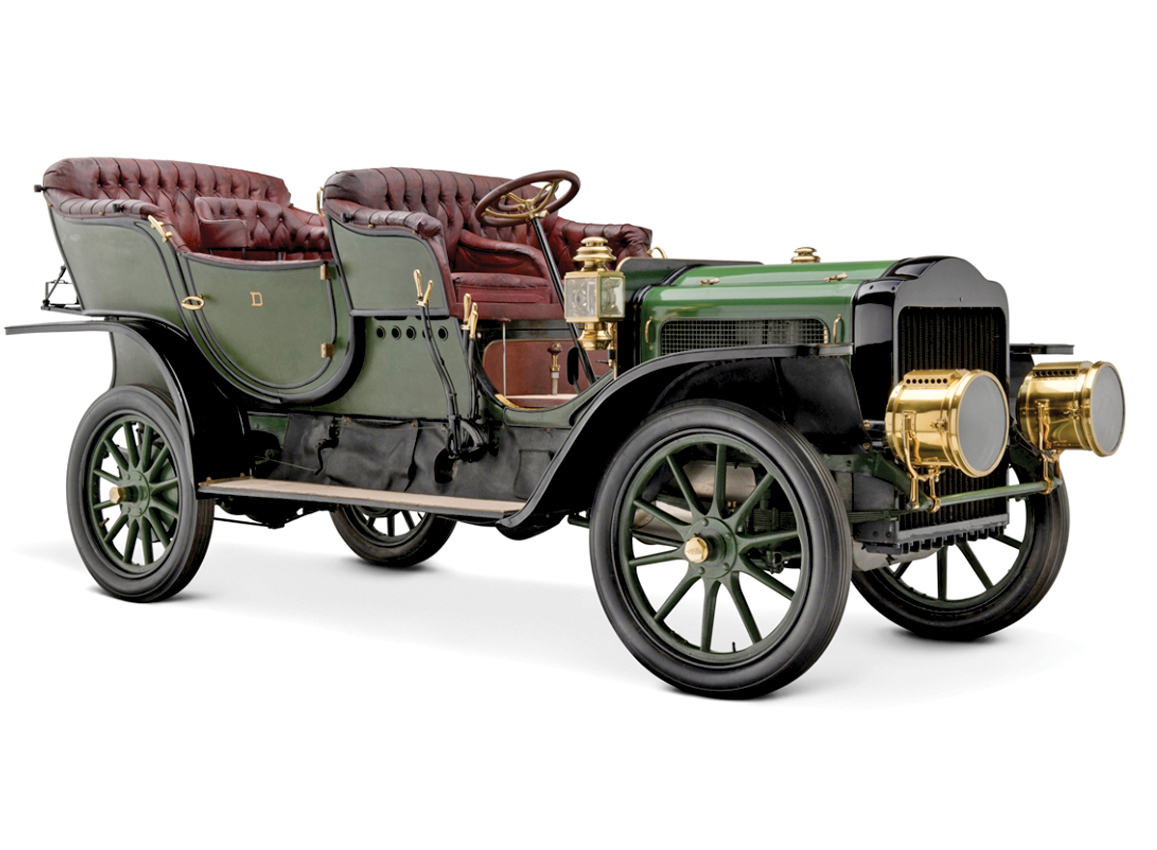
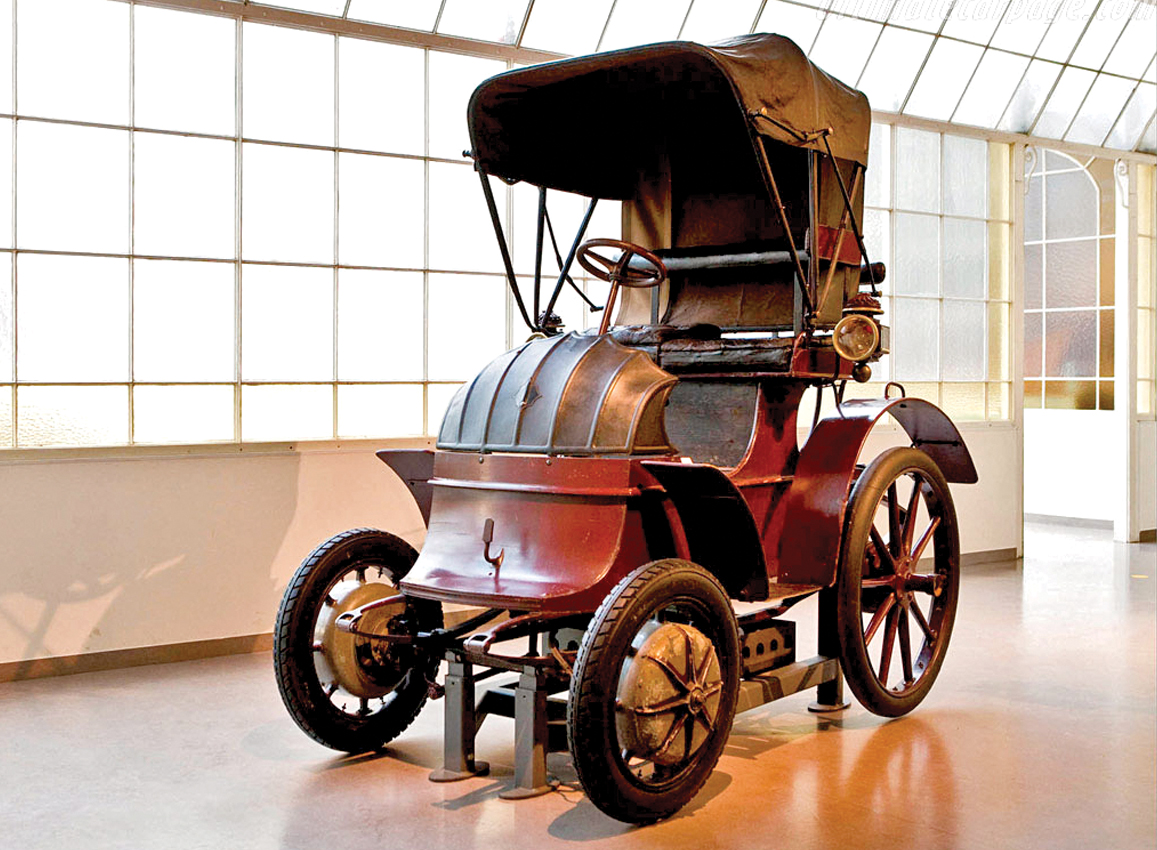
The Doble steam car was a late entry, starting up in 1909 and continuing until 1931. This car went a long way to solving many of the steam car disadvantages such as the long wait to build up steam pressure, but by the time it hit its stride all it could hope for was to come close to matching the instant-start and range capabilities of the gasoline cars – and it wasn’t competitive on price.
Steam cars were the oldest type and were based on older technology used in railway engines, stationary engines and heavy tractors. In a car, steam offered smooth, relatively quiet operation with lots of power and quick acceleration without the trouble of shifting gears. The steam-driven engine has full torque from zero rpm, so no transmission is needed. In addition, there was already an infrastructure of mechanics familiar with the maintenance and operation of steam engines.
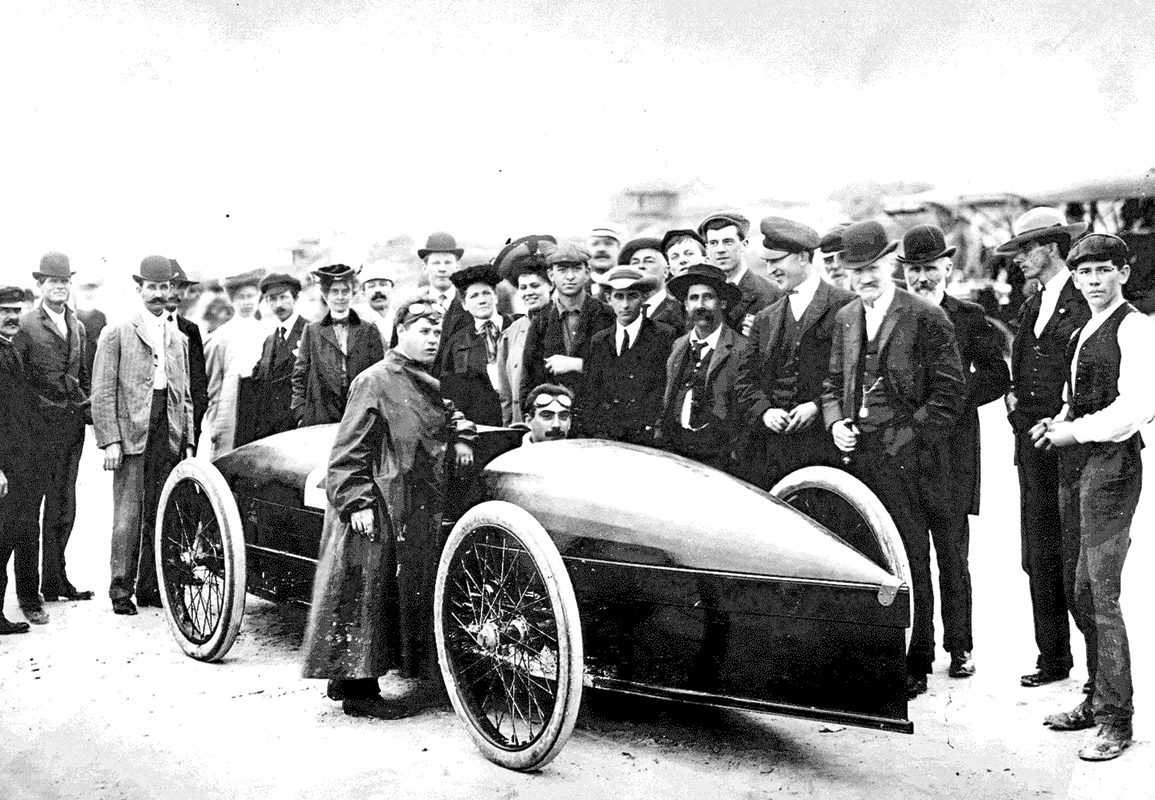 Working against those positives was the considerable time it took to fire up the boiler and produce working steam pressure. There’s a YouTube clip featuring Jay Leno’s 1907 White (www.youtube.com/watch?v=LKA4cdAzsco), which details just how complicated and time-consuming it was to get it ready to go for a run. A similar clip shows him starting up his 1922 Stanley. Another potential problem is the water used to make steam could freeze in cold weather. Even with a condenser, as equipped on the White, frequent stops are needed to replenish the water supply.
Working against those positives was the considerable time it took to fire up the boiler and produce working steam pressure. There’s a YouTube clip featuring Jay Leno’s 1907 White (www.youtube.com/watch?v=LKA4cdAzsco), which details just how complicated and time-consuming it was to get it ready to go for a run. A similar clip shows him starting up his 1922 Stanley. Another potential problem is the water used to make steam could freeze in cold weather. Even with a condenser, as equipped on the White, frequent stops are needed to replenish the water supply.
It may seem surprising now, but electric cars held the early speed records. Almost right from the start, speed competitions were used as a way to promote the new kinds of cars. In 1898 in France, Gaston de Chasseloup-Laubat set an official speed record of 63.15 km/h in Charles Jeantaud’s electric car. The next year, he traded the record back and forth with Camille Jenatzy in his “La Jamais Content,” who ended it with a record speed of 105 km/h. Meanwhile, Leon Serpollet was perfecting his steam-powered design. In 1902, he set a new record in his “Oeuf de Pâques” (Easter Egg) with a speed of 129.8 km/h. Thereafter most land speed records were set by gasoline-powered cars.
The early electric cars were pure electric, driven by electric motors drawing power from rechargeable storage batteries. Despite all of the hopeful talk about creating new “miracle” batteries, the same lead-acid battery chemistry used before 1900 is still in service as the predominant battery chemistry today. In the following years, a few cars were designed with series hybrid powertrains (notably the 1900 Lohner-Porsche) and some with a parallel hybrid layout in which the wheels could be driven by an electric motor, or directly by mechanical connection to the gasoline engine but these hybrid systems were never very popular for passenger cars.
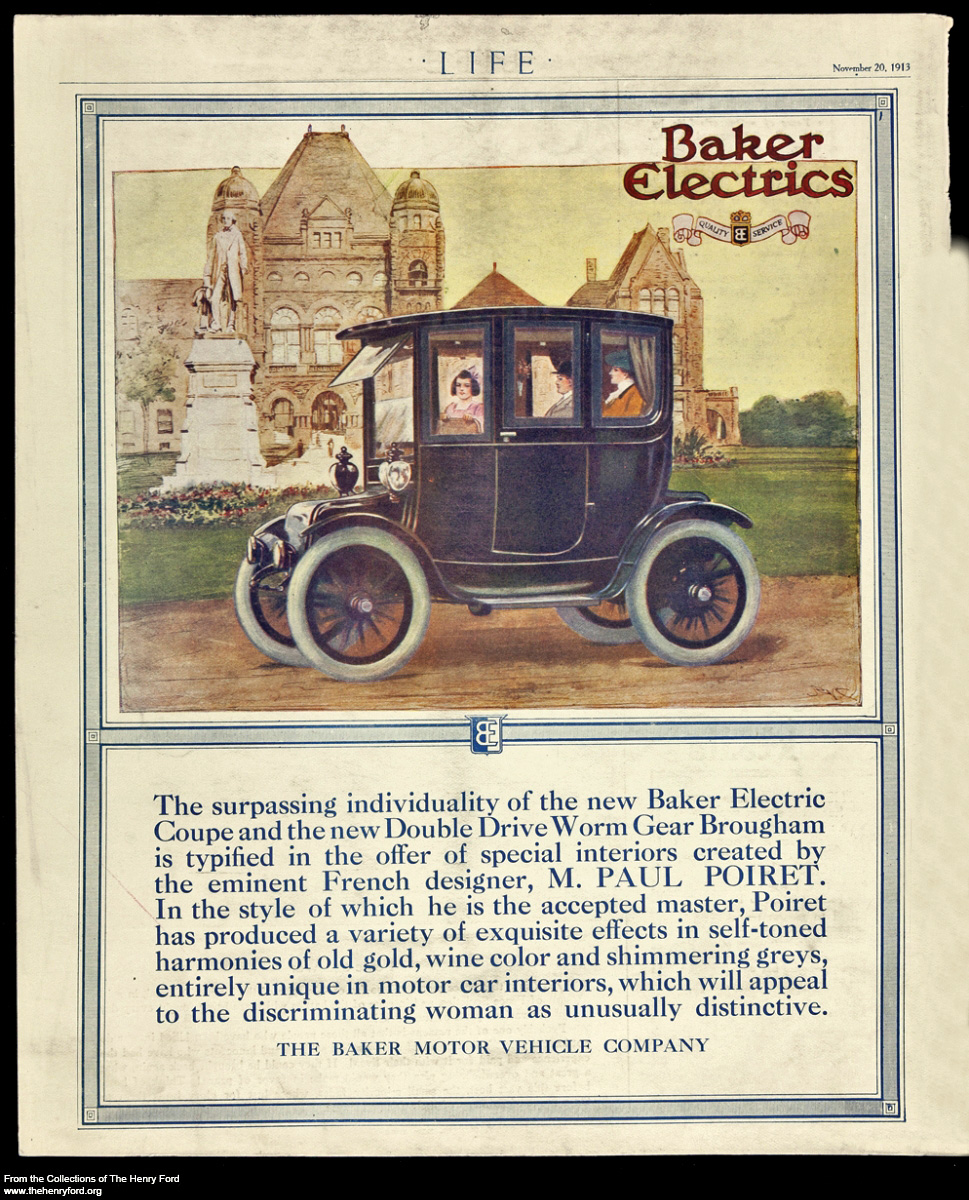 At first, electric cars had their own niche with specific advantages over their gasoline IC competition. The cars were ready to go instantly with no complicated start-up procedures or hazardous, strenuous cranking and were easy to control with no gear-changing – making them ideal for owner-drivers and even women drivers. They were also quiet in contrast to the noisy IC engines (especially before mufflers were invented). The “women’s car” image these electrics gained likely didn’t do much to enhance their appeal among men who were buying almost all of the cars then.
At first, electric cars had their own niche with specific advantages over their gasoline IC competition. The cars were ready to go instantly with no complicated start-up procedures or hazardous, strenuous cranking and were easy to control with no gear-changing – making them ideal for owner-drivers and even women drivers. They were also quiet in contrast to the noisy IC engines (especially before mufflers were invented). The “women’s car” image these electrics gained likely didn’t do much to enhance their appeal among men who were buying almost all of the cars then.
Another complicating factor for electrics was the age-old question of range. Typically, an electric car in the day could go about 80 to 150 kilometers before the battery charge ran out. After that, it had to be hooked up at a recharging station overnight to recharge to batteries, similar to today’s electrics. It might be simple to run the car on the road, but battery maintenance was another question, encouraging electric car owners to store their cars at a depot where skilled technicians would look after the recharging. All this made the electric cars suitable as city vehicles that never ventured far from home.
During the first decade of the last century, electric taxis were a popular idea in American cities and in Europe. The problem of slow battery recharging times was tackled by setting up depots with interchangeable plug-in battery packs, but this still-popular idea. Electric taxis did not survive beyond WWI.
The Baker brand became one of the best-known electric cars. In 1906, Baker made 800 cars, making it the largest electric vehicle maker in the world. Keep in mind that during the first decade of the 20th century, automobile production was modest. In 1914, Baker merged with another electric-car maker, Rauch and Lang, but by then the market for electrics was on a downward spiral.
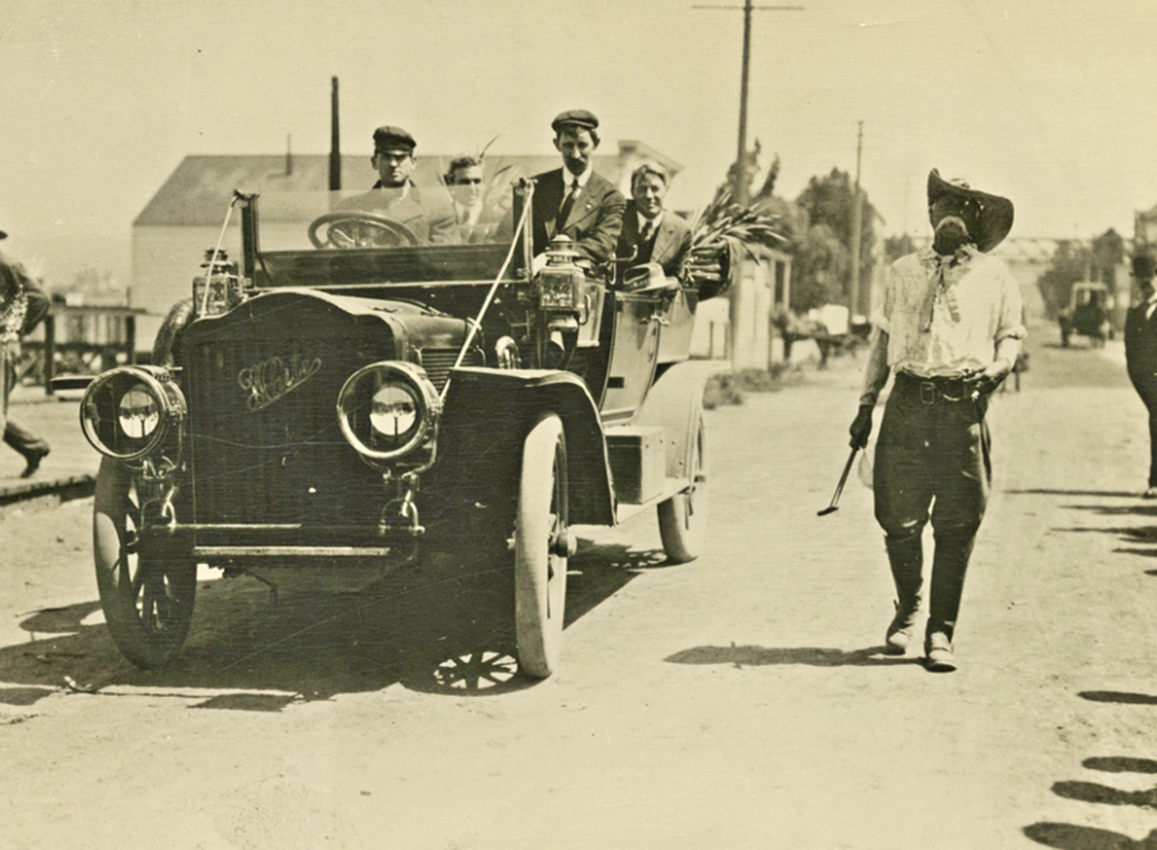
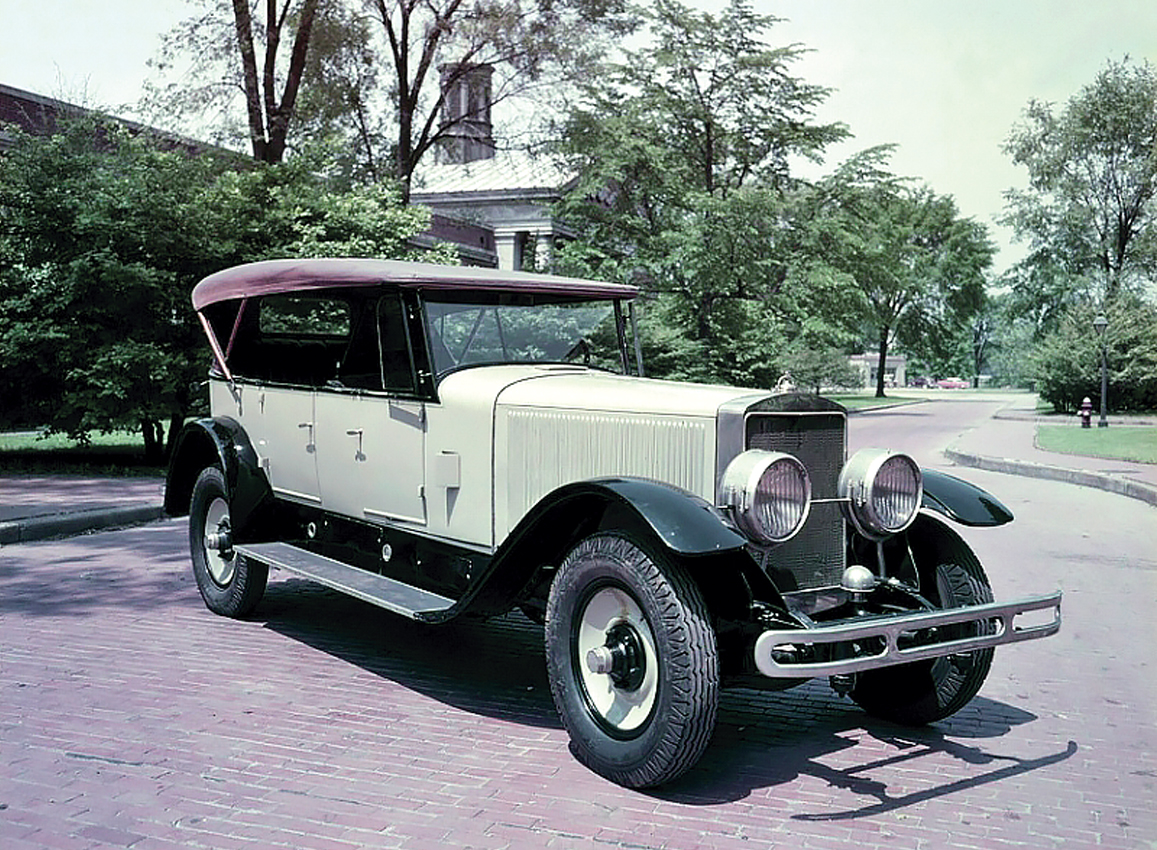
Detroit Electric was another important make of electric car. It was an outgrowth of the Anderson Carriage Company in Detroit and started making electric cars in 1907. Even Henry Ford recognized that electric cars had their erits, which prompted him to buy two in 1908; one for his wife and one for his friend Thomas Edison. Despite the buying public’s mass preference for gasoline power, Detroit Electric was still offering electrics on special order to would-be buyers as late as the mid-1930s.
As for gasoline-powered cars, in addition to the difficulties and danger of starting by cranking, the noisy IC engines often gave trouble. They emitted fumes and spilled gasoline and oil making them smelly and dirty. But even in the early days when gasoline-powered cars were pretty crude, they had their charms. It wasn’t long before they had a reputation for power and unlimited range, which made them ideal for touring – speedy inter-urban travel on the country roads. Unlike the nerdy, feminine electrics in particular, they were “adventure cars.” There was an established supply chain for kerosene (for lamps, cooking, heating) across the country and these same agents could easily add gasoline to their supplies on hand. Even by 1904, gasoline-powered cars were out-selling the steam and electric competition 10 to one.
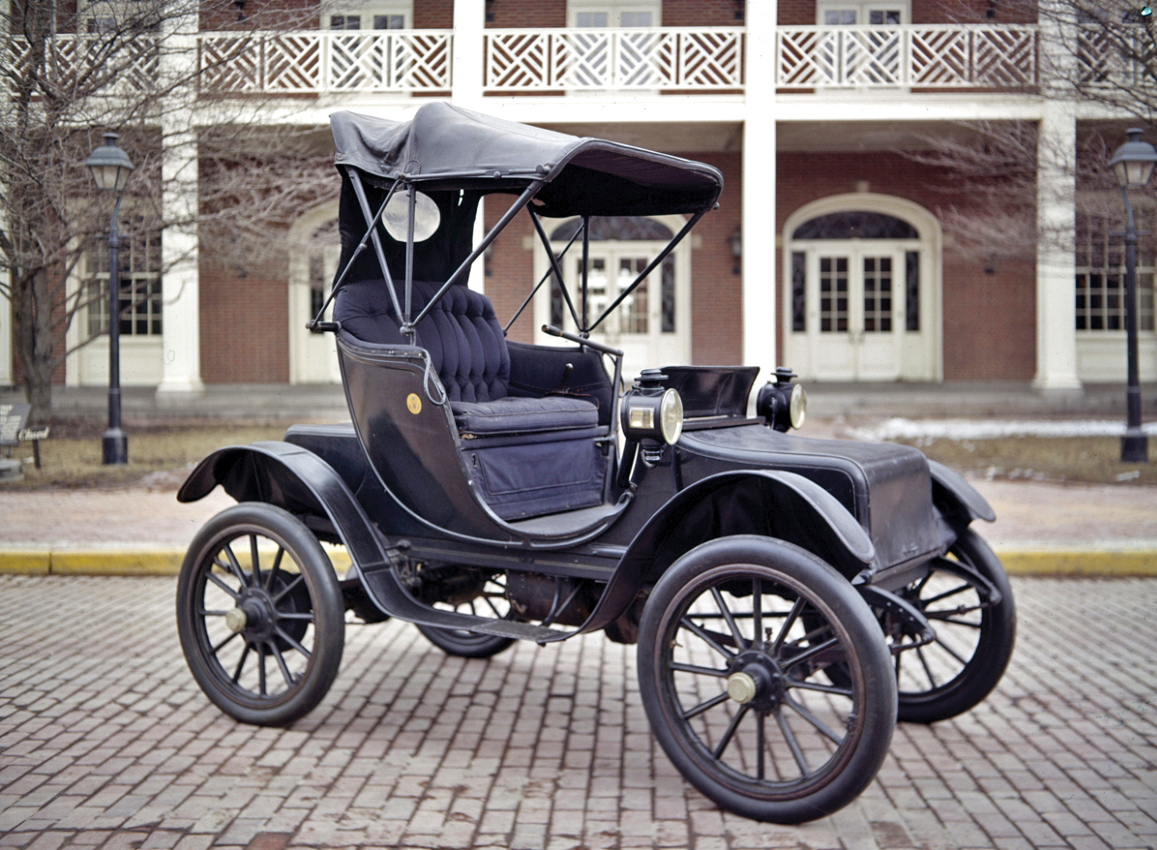
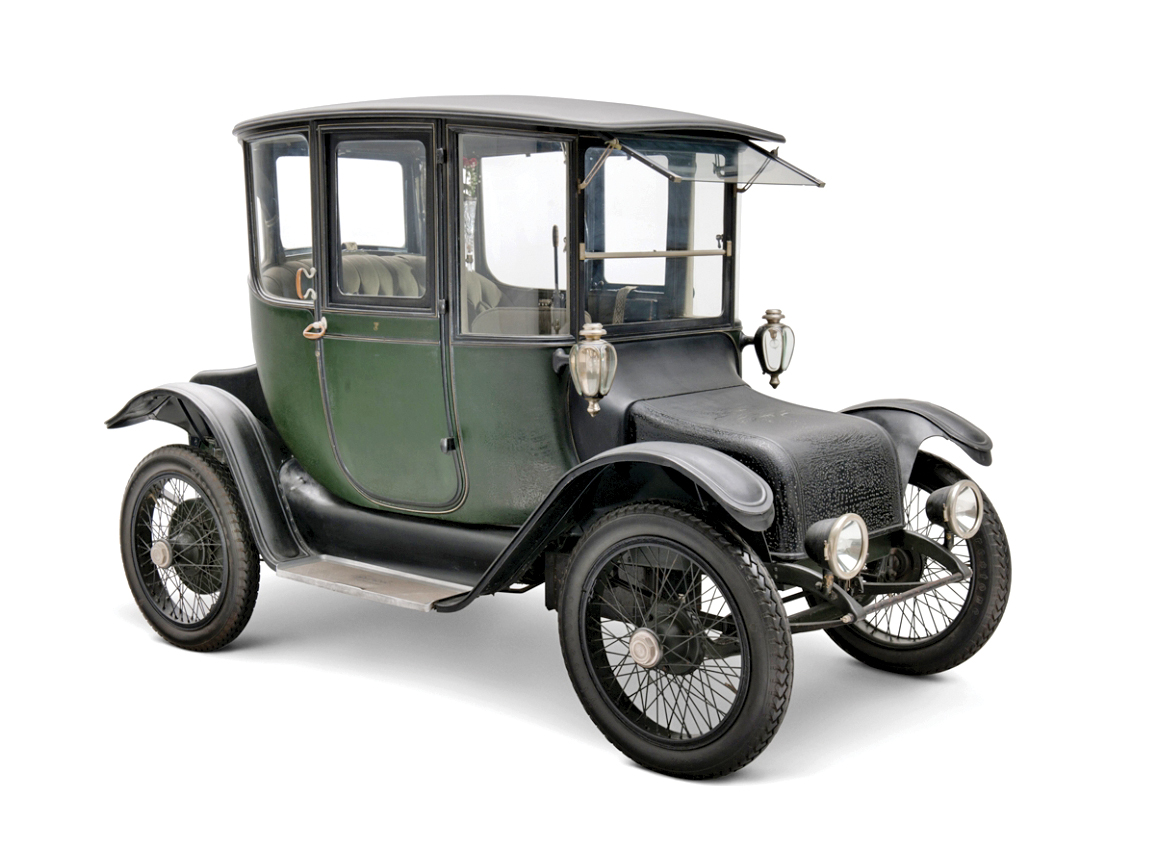
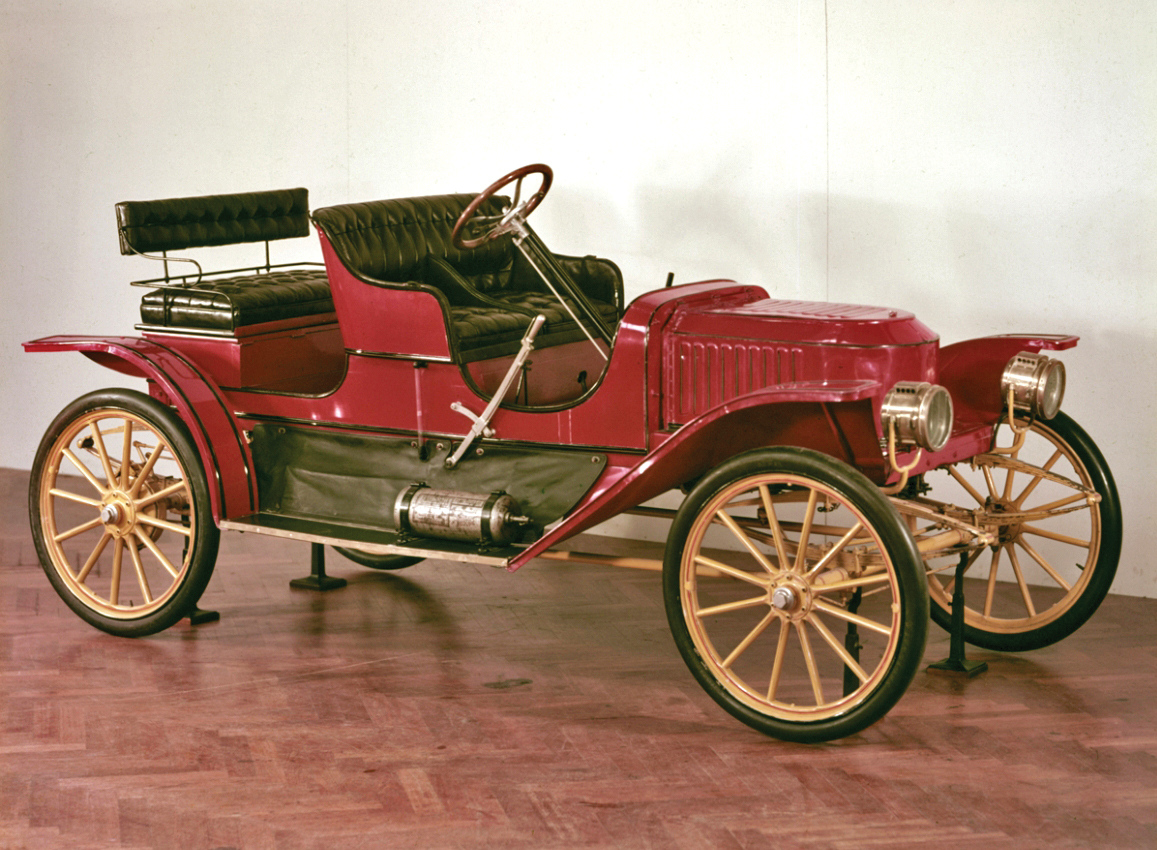
There are four factors that played a big role in gasoline cars becoming dominant:
- As early as 1901, the gasoline-powered cars got a big boost when a huge deposit of crude oil was found in Texas making the cost of gasoline (at that time a biproduct of the production of their best-seller – kerosene) relatively inexpensive.
- As the rural road system improved, it made inter-urban touring more attractive, something for which the electric car was almost totally unsuited.
- The electric starter was introduced in 1912 and it soon eliminated the need to crank start gasoline cars.
- Perhaps the biggest factor was the development of the Model T by Henry Ford. This car, with its simple design and high wheels was an ideal, go-anywhere car that opened up the market outside the cities and around the world. A seldom-mentioned advantage of the Model T was its foot-pedal gear selection system, which required no wrestling with a balky non-synchromesh gearbox – eliminating one obstacle for the novice or nervous driver. Once Ford got his assembly line going, he was able to drop the price far below any of the competition. Originally, the Model T sold for $825, but by 1923 he had the price down below $300 and captured over half the world market for cars. This must have had the effect of killing the market for almost every other automaker.
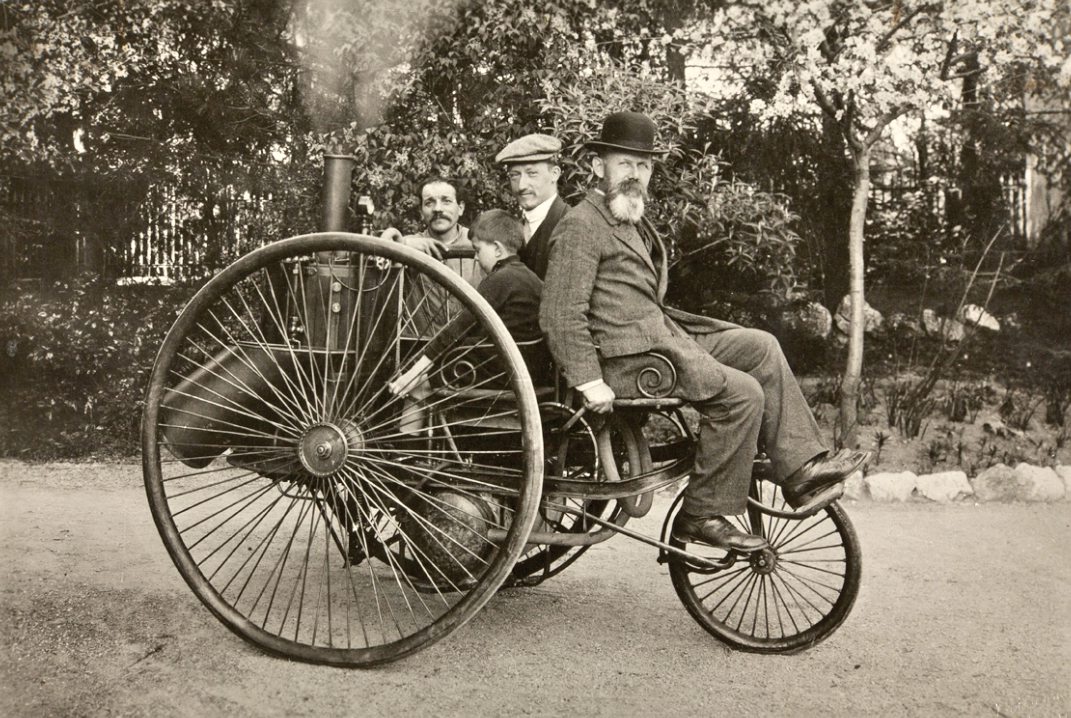 In the post-WWI period, the Model T and other gasoline-powered cars had gained such a strangle-hold on the market while the few surviving steam and electric makes were stuck with insurmountable disadvantages. Except for specific niche uses where electrics had an edge with clean running (indoor use) or start-and-stop running (delivery vans or golf carts), they disappeared.
In the post-WWI period, the Model T and other gasoline-powered cars had gained such a strangle-hold on the market while the few surviving steam and electric makes were stuck with insurmountable disadvantages. Except for specific niche uses where electrics had an edge with clean running (indoor use) or start-and-stop running (delivery vans or golf carts), they disappeared.
Today, concerns about air pollution (originally hydrocarbons, now carbon dioxide as well) and gasoline prices have fostered a new interest in electric-powered cars. However, despite a century or more to work on them, the fundamental problems with electrics still remain: limited range and the time required to recharge the battery when that limit of range has been reached. The pure electric car is still very much a “city car” while the buying public seems to be still be in love with the “adventure” aspect offered by nearly every gasoline-powered available.






















